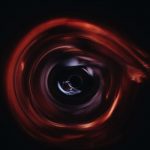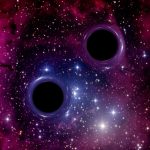A bounty of potential gravitational wave events hints at exciting possibilities0
- From Around the Web, Space
- August 5, 2021
Most are probably false alarms, but some could be spacetime ripples that are extra hard to spot

Most are probably false alarms, but some could be spacetime ripples that are extra hard to spot

ESO’s fleet of telescopes in Chile have detected the first visible counterpart to a gravitational wave source. These historic observations suggest that this unique object is the result of the merger of two neutron stars. The cataclysmic aftermaths of this kind of merger — long-predicted events called kilonovae — disperse heavy elements such as gold and platinum throughout the Universe. This discovery, published in several papers in the journal Nature and elsewhere, also provides the strongest evidence yet that short-duration gamma-ray bursts are caused by mergers of neutron stars.

Physicists have concluded that some masses of boson particles — members of the things-that-could-explain-dark-matter club — don’t actually exist, meaning the parameters for locating the presumably vast but hypothetical material just became more refined.

The LIGO Scientific Collaboration and Virgo Collaboration released a catalog of results from the first half of its third observing run (O3a), and scientists have detected more than three times as many gravitational waves than the first two runs combined.

A binary black hole merger likely produced gravitational waves equal to the energy of eight suns

Hypothetical tunnels in spacetime could show up in LIGO and Virgo data

Wednesday, August 21st 2019, 8:45 pm – Astronomers detect gravitational waves that may point to a colossal collision

Sean McWilliams, an assistant professor at West Virginia University, has developed a mathematical method for calculating black hole properties from gravitational wave data. He has written a paper describing his method and posted it on the arXiv preprint server. The paper has been accepted for publication in Physical Review Letters.

Astronomers still hope to catch a star going supernova and a bumpy neutron star, among others

Scientists added 4 new sets of spacetime ripples to their inventory